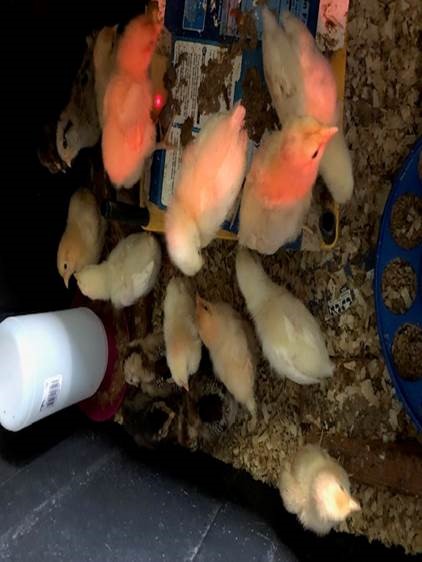Pandemic Hobby, Part 2: Chickens
By Becky Stewart
Posted on 2020-09-10

Disclaimer: The views expressed in this blog post are those of the author(s) and do not necessarily reflect the official position of the National Science Teaching Association (NSTA).
Watching animals develop is a great way to learn about biology. In years past, classrooms had been able to get fertile eggs and an incubator to watch the eggs hatch, then observe the chicks for a few days. These programs have fallen out of favor due to concerns about what happens to the chicks after hatching. Luckily for everyone teaching and learning from home now, virtual experiences developed by educators are accessible from wherever you and your students happen to be. If you aren’t going to raise chickens yourself, these types of resources can provide a fascinating learning experience. The amount of strength that a chick needs to hatch successfully is truly inspiring. If birds aren’t your thing, you can find similar resources about the life cycles of a butterfly, a tree frog, or other animals.
As I mentioned in my first blog post about him, my boyfriend C has developed a fowl obsession. He had a previous (bad) experience with chickens, but that hasn’t deterred him from trying again to introduce them to his property, fast becoming a mini-farm. The 18 chicks C ordered from Hoover’s Hatchery in Iowa--six each of Ameraucanas, Buff Orpingtons, and White Leghorns--arrived in early July, and were collected at his local post office. There are supposed to be two males and four females of each, but it is difficult to tell male and female chicks apart when they hatch, so that may not be completely accurate.
Similar to ducks, chicks have a high body temperature (104° to 107°F), and need an artificial heat source to stay warm for the first few weeks. The bin C organized for them has both a brooder plate and a heat lamp, as well as a small box for shelter if they do get too warm.

One of the things I love about chickens is how very like dinosaurs they seem. Their leathery, clawed feet and sharp beaks make it easy to imagine what a dinosaur would have looked like. In fact, birds are the closest living relatives to dinosaurs. China is most likely where that evolution happened, given the presence of so many feathered dinosaur skeletons in China and evidence of domesticated chickens dating back many thousands of years with specific types of jungle fowl from Southeast Asia.

When the chicks start to develop combs, it is possible to identify their sex with greater certainty: Males have larger combs. The combs and other fleshy parts on a chicken’s head (which include wattles and sometimes earlobes) are designed to help chickens cool off. The fleshy areas circulate blood under the skin to allow for heat transfer.

C spent a fair number of hours over the winter building a mobile chicken run and a small coop. The chickens moved outside when they reached four weeks old, to make more room for the 48 quail! (More on the quail, and the geese, in subsequent posts.)
The chickens will spend the majority of their time in the orchard area. They will eat ticks and grubs and other insects that aren’t beneficial to the property. Chickens start laying eggs when they are approximately seven months old, so some time in January or February we will start finding chicken eggs to supplement the duck eggs and the quail eggs. At that point, my pandemic hobby of cooking and baking will really start to pay off.
 Becky Stewart is a geologist by training and a writer by avocation. She has worked for scientific and educational publishers and is currently a scientific copywriter for a laboratory informatics consulting firm. She enjoys spending time in nature, including in her own garden, which has more and less wild phases depending on the season. Additional hobbies include cooking, woodworking, and minor home improvements.
Becky Stewart is a geologist by training and a writer by avocation. She has worked for scientific and educational publishers and is currently a scientific copywriter for a laboratory informatics consulting firm. She enjoys spending time in nature, including in her own garden, which has more and less wild phases depending on the season. Additional hobbies include cooking, woodworking, and minor home improvements.

